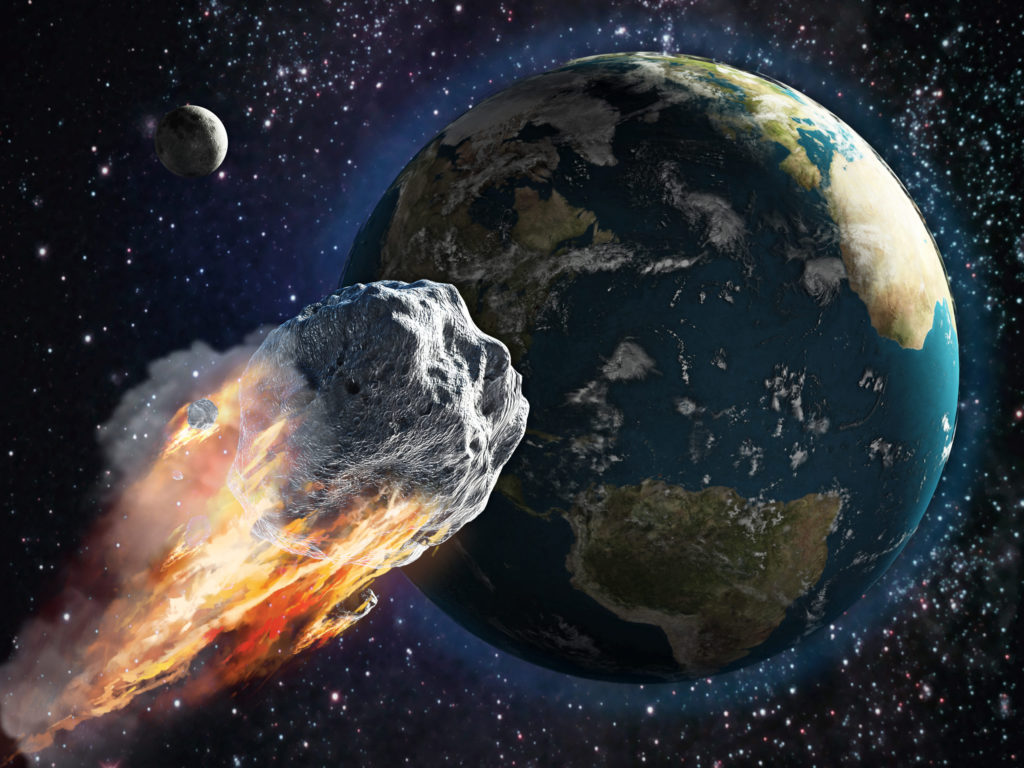
Another asteroid has been in the news this month. On August 5, NASA announced it is launching a mission next year to study Psyche 16. This asteroid is estimated to contain metal worth more than US$10,000 quadrillion (or ten billion billion), which is enough to make everyone on Earth a dollar billionaire.
First spotted by an Italian astronomer in 1852, Psyche 16 is a 220 km-wide asteroid comprised mostly of iron and nickel (unlike the igneous rock and ice of most other asteroids). It will take NASA’s space probe four years to reach the asteroid, which is nestled between Mars and Jupiter.
Europe in general, and Luxembourg in particular, stands ready to play a role in the mining of these metal deposits in space.
The Grand Duchy has long had ambitions to exploit asteroids, albeit the near-Earth ones (orbiting between Earth and Mars), rather than those in the Asteroid belt beyond Mars. Over five years ago, in February 2016, the then Deputy Prime Minister of Luxembourg, Etienne Schneider, announced plans to mine asteroids in collaboration with U.S.-based Deep Space Industries and Planetary Resources Inc.
Luxembourg established a dedicated space law in 2017 that provided a high level of protection for investors, explorers and miners
Luxembourg has a long-standing space industry and was instrumental in developing satellite communications a generation ago. The former head of the European Space Agency, Jean-Jacques Dordain, told the Financial Times at the time that he was “convinced there is great scientific and economic potential in Luxembourg’s vision.” Although it sounded futuristic at the time, Dordain was adamant that the basic technology already existed.
Luxembourg was the first country in Europe to offer a legal framework for the exploration and use of space resources. It established a dedicated space law in 2017 that provided a high level of protection for investors, explorers and miners. Moreover, the Luxembourg Space Agency offers access to financial solutions and supports academic research.
There was renewed debate in 2020 over governance of the heavens after a flurry of outer-space activities. These included NASA’s announcement in October that water had been found on the Moon, which raised expectations that it may be used as a base for space exploration.
The United Nations Committee on the Peaceful Uses of Outer Space sets the standard for the development of international space law, and various treaties have provided a basic set of rules. These treaties remain untested, however, regarding who would own the rights to minerals found in outer space. For commercial space projects, including mining, to be viable, explorers and investors will need to be certain of their rights to extract the materials they discover.
There is an analogy between these emerging space laws and the rules governing the high seas. It is possible to explore, and mine, marine resources without appropriating the ocean. Although the UN’s Outer Space Treaty defines and forbids the appropriation of the Moon, or any other celestial bodies, it does not prevent the appropriation of resources in outer space.
Quite apart from their potential as orbiting lumps of iron and nickel, asteroids can contain some very unearthly material. Minerals discovered that are not known to occur naturally on earth include panguite and edscottite. The former is a type of titanium oxide that was discovered in 2012 from the Allende meteorite that had landed in Mexico 43 years earlier. Edscottite (an iron carbide) was found in the Wedderburn meteorite that impacted Australia during 1951.
Miners will need to extend their lexicon. Asteroids and comets (which are mainly comprised of ice) are renamed meteors if they enter the Earth’s atmosphere, and meteorites if they land on the surface. Any recovered material is called a ‘meteorite fall’ if the descent had been observed, and a ‘find’ if it wasn’t seen. In geology, a bolide is a meteorite large enough to create an impact crater, whereas in astronomy it is simply a brighter-than-usual meteor.
Meteorites are not especially rare, with a total of some 60,000 rocks from space having been found on earth. Around 500 meteorites are observed annually but barely 2% of these are recovered (rarely much more than ten per year), with material from a total of only 1,500 meteorite ‘falls’ being recorded historically. Because most of the meteorite burns up in the Earth’s atmosphere, less than 5% of the initial weight actually lands.
Meanwhile, NASA researchers have identified September 24, 2182, as the most likely date for Bennu to impact Earth. Better make a note in your diary, it’s rocket science.
(This article first appeared in The Northern Miner)




